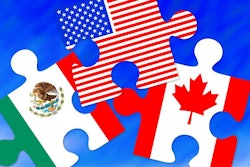
Prior to 2020, the global pet food market – along with many economies worldwide – was rocking along, riding a wave of several years of sustained growth, with more projected for this year. It’s become a cliché, but oh, what a difference a few months makes. That rosy outlook has dimmed in seemingly a heartbeat with the rapid spread of the COVID-19 pandemic and resulting economic meltdown.
Now, market analysts are scrambling to follow the latest sales data, number of pet adoptions and similar, specific measures, along with updates on coronavirus outbreaks and reopenings of states, regions and countries (which, in some cases, are leading to additional outbreaks). Some of the largest companies, pet food and otherwise, aren’t even attempting to issue financial forecasts for the next quarter, let alone the rest of the year.
The bottom line is continuing uncertainty, which no one is comfortable with. Yet, to find a silver lining for pet food, perhaps we can look to 2019 as a baseline for not only setting up pre-pandemic vs. post-pandemic forecasts but also possibly foretelling new growth at some point in the future.
Positive 2019 numbers for pet food
Entering 2020, the global pet food market stood at more than US$91 billion, with US$36 billion of that in the largest market, the U.S., according to data from Euromonitor and Nielsen. U.S. sales had grown 7.3% year-over-year (YOY) in 2019, and Packaged Facts was projecting 6% growth for 2020.
Globally, the market had risen 6.5% YOY in 2019, driven by continuing double-digit gains in developing regions like Asia-Pacific, Eastern Europe and Latin America, Euromonitor said, as well as by ongoing premiumization and humanization. “Even Western Europe, the slowest-growing region in 2019, recorded its strongest growth since 2015,” wrote Jared Koerten, industry manager, food and nutrition, for Euromonitor, in the May 2020 issue of Pets International magazine.
While Koerten didn’t provide the specific increase for Europe, we can glean that now from new data just released by FEDIAF (the European Pet Food Federation), which represents 18 countries in Western and Eastern Europe. Pet food sales in that region have increased 2.6% annually, reaching 21 billion euros (US$23.6 billion) in 2019, with a volume of 8.5 million metric tons.
Pet food value for their hard-earned money
Of course, the evolving pandemic situation and ongoing economic pain may cause a complete turnaround in pet food’s fortunes for 2020 and beyond. Yet, to date, with most people still seemingly able to keep their beloved pets despite financial hardships, the outlook is cautiously optimistic, because pets are family members that still need to eat. Many pet food executives have reported strong revenue increases for their brands; and even if some pet owners have to trade down to lower-priced pet foods, the market should hold up.
In the U.S., Packaged Facts has revised its forecast from April, which projected an overall loss of 17% for the pet care market this year, with pet food as one of the few bright spots at 4% expected growth. Now, after an increase in pet adoptions has continued and sales of pet products have kept pace, Packaged Facts projects the U.S. pet care market to at least stay flat for 2020; rising sales of those pet products (including pet food) will help offset continuing losses in pet services.
The responses of some European governments to the pandemic and economic downturn may help pet food markets in that region also remain flat and perhaps even grow slightly. Again, pets there still need to eat. And in China, where the pandemic began in December 2019, by the end of March companies like Yantai China Pet Foods were reporting ongoing strength in their businesses, at least domestically. Despite new COVID-19 outbreaks in places like Beijing, Pet Fair Asia, a large pet trade show, is still scheduled to take place in August in Shanghai.
For the global market, the depth of the recession will play the largest role in how pet food and pet care fare, according to a new report from Euromonitor. The key will be the level and type of value for their hard-earned, possibly scarce, money that pet owners believe they are receiving from the pet foods and other pet products they buy.
View our continuing coverage of the coronavirus/COVID-19 pandemic.

















